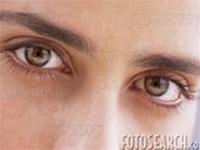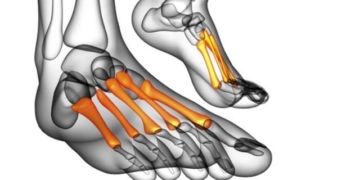Eyelids serve as a protective barrier for the eyeball but are often aggressively attacked by various pathogens. Consequently, infections and localized inflammations of the eyelids are quite diverse, ranging from styes and chalazia to blepharitis.
 |
(Image: TTO) |
The prevalence of blepharitis is relatively high but often overlooked since it does not lead to blindness or death. However, the discomfort caused by this condition and the amount of medication that patients must use can be significant. Many individuals resort to self-medication or recommend the use of prolonged corticosteroid treatments. While symptoms may improve, the potential consequences are dangerously unpredictable: fungal and bacterial superinfections, glaucoma due to prolonged corticosteroid use, cataracts, and more.
British and American scientists categorize eyelid infections into four main groups: styes, chalazia, anterior blepharitis (eyelid margin inflammation), and posterior blepharitis (Meibomian gland dysfunction).
Numerous factors can contribute to eyelid inflammation, such as poor hygiene, superinfection from pathogenic bacteria in everyday items (like handkerchiefs), dust, pollution, air conditioning use, dry eye syndrome, diabetes, and psoriasis. Medical professionals can also inadvertently cause blepharitis in patients by administering hormones like estrogen and androgen or through prolonged radiation therapy.
The usual culprits behind blepharitis are Staphylococcus, fungi, or Demodex mites. Staphylococcal blepharitis often leads to chalazia or styes, eyelid margin ulceration, and in severe cases, can cause corneal inflammation in the lower one-third of the eye.
Blepharitis
Patients often complain of a burning sensation in their eyes, a gritty feeling as if there is sand in their eyes, tearing, and moderate pain in the eye and eyelid, sometimes accompanied by blurred vision, especially in the morning. Upon clinical examination, the eyelid margin appears red, with debris and scales around the eyelash follicles, along with vascular dilation along the anterior part of the free margin. The openings of the glands may be enlarged, producing excess secretions. There may also be a presence of foamy discharge.
Typically, blepharitis will accompany conjunctivitis, known as blepharoconjunctivitis.
Seborrheic blepharitis: The name of the condition reflects its nature. It is usually secondary to seborrheic dermatitis. Skin lesions include erythema and scaling on the scalp and facial areas, often preceding eyelid lesions. Favorable conditions for the disease to develop include cold climates, alcohol abuse, neurological disorders, stress, or AIDS. The progression of eyelid inflammation typically parallels skin lesions (either regressing or flaring up).
Rosacea: Rosacea affects about 10% of the global population, with 50% experiencing symptoms in the eyes. Triggers for the development of this condition may include extreme temperatures (either hot or cold), fair skin, a diet rich in spices or hot substances, beer, alcohol, and tobacco. Symptoms of rosacea are diverse: blepharitis, vascular dilation along the eyelid margin, recurrent chalazia, conjunctival hyperemia, scleritis, corneal neovascularization, vesicular lesions, and eyelid ulcers. Rosacea is often associated with Meibomian gland dysfunction.
Blepharitis due to Meibomian gland dysfunction: The Meibomian glands are exocrine glands whose openings are located on the free margin of the eyelids, behind the eyelashes. Their function is to produce the lipid layer of the tear film, which helps prevent evaporation and determines the quality of the tear film. Inflammation, infection, and hypersensitivity can alter tear film quality and also contribute to blepharitis.
The primary consequence of blepharitis is a dry and burning sensation in the eyes. This is due to rapid evaporation of tears caused by a poor-quality lipid layer—an inevitable outcome of Meibomian gland dysfunction.
Blepharitis tends to be chronic and is accompanied by potential complications that are hard to avoid. Treatment helps manage the condition but usually cannot achieve complete resolution. Treatment methods include personal hygiene, primarily hand washing, using disposable wipes, massaging the eyelid margins multiple times a day with gloved hands, and applying warm compresses or specialized gels to the eyelid margins with cotton swabs. These measures are mainly to help drain the Meibomian glands.
Topical or systemic antibiotic treatments can sometimes be very beneficial. Recommended antibiotics belong to the tetracycline group and oxytetracycline, such as tetracycline ointment, oxytetracycline ointment, and the sulfonamide group like bacitracin.
Chalazion
A chalazion is a benign tumor on the eyelid. It is characterized by swelling that occurs due to blockage of the Meibomian gland ducts. Clinically, a chalazion presents as a small, round, red swelling. The location is usually right next to the eyelid margin. Chalazia can present in three clinical forms: internal, external, and on the eyelid margin itself. The progression of a chalazion can take various forms: cyst formation, causing discomfort and necessitating drainage; suppuration and abscess formation; spontaneous rupture with pus draining externally; or self-resolution.
Regardless of the progression, chalazia can recur. Treatment usually involves warm compresses, antibiotics combined with topical corticosteroids for seven days. Up to 50% of cases may require surgical intervention, particularly when the chalazion is in a “quiet” phase—beyond the acute inflammation stage.
Stye
A stye is an acute inflammation of the sebaceous gland around the eyelash follicle, usually caused by Staphylococcus bacteria. It initially presents as eyelid swelling, followed by the emergence of a swollen, red, and painful area upon touch. After a few days, the pain intensifies, accompanied by yellow pus at the eyelash follicle. Discomfort will disappear if the stye ruptures and drains along with the eyelash. Treatment typically involves warm compresses and antibiotic ointments combined with corticosteroids during the first 48 hours. Subsequently, drainage may be considered. In severe cases with significant swelling and regional lymph node inflammation, oral antibiotics are necessary. To prevent styes, maintaining good eyelid hygiene is essential.



















































